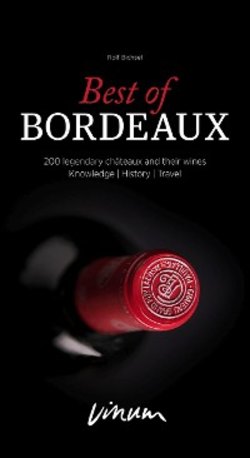Читать книгу Best of Bordeaux - Rolf Bichsel - Страница 32
Оглавление32
History Fairy-tale chateaus
Fairy-tale chateaus
Today only a few, well known wine estates such as Lafite, Latour or Margaux
actually date back to medieval manors (or ‘seigneuries' in French, a form of ad-
ministrative district where the local lord dispensed justice and reigned supreme).
Most of these also had an old, generally dilapidated castle, or more specifically
a fortress, as a chateau is by definition not a residential building but rather be-
gan life as a military defence facility. These dark, damp stone palaces with their
thick walls and arrow-slit windows had long since been uninhabited, or only oc-
cupied when necessary. From the Renaissance onwards, the old chateaus gave
way to more comfortable Italian-style villas known as ‘maisons nobles'. The ac-
tual ancestral seat declined into a symbol of old ancestry and high nobility. One
of the first actual wine chateaus was Haut-Brion which the de Pontacs built in
1550 as a country house, summer residence, and symbol of their estate, wealth
and perhaps even their vineyards which surrounded it. However, the Bordeaux
wine chateau primarily found in the Médoc is a 19th-century invention. In 1787,
Jefferson spoke of Haut-Brion without the Château pre
fi
x, and only mentioned
two examples: Château de la Fite and Château Margau, both old seigneuries.
Only La Tour, also an old seigneurie, had to renounce its chateau title and was
relegated to a mere ‘cru'. Many ‘chateaus', including the one at Latour, were only
built after the o
ffi
cial 1855 classi
fi
cation we will soon be examining in further
detail: it was not until after this publication (which listed all estates still without
their ‘chateau') that the term for a wine estate became an essential prefix, and
a real chateau building played a vital role in establishing its image. The build-
ers of these more or (generally) less tasteful edifices were the nouveau riche,
entrepreneurs or bankers such as the Douats, Pereires or Rothschilds. They
found their ideal creator in the form of architect Louis-Michel Garros, the inven-
tor of every possible ‘neo' style (neo-Renaissance, neoclassical etc.) who was as
happy to plunder English Gothic as the French Renaissance. The first chateau
commission given to Garros, who settled in Bordeaux in 1863 after studying in
Paris, was Fonréaud in Listrac. This was followed by numerous others including
Lachesnaye, Malescot-Saint-Exupéry, Lascombes and Ducru-Beaucaillou. Gar-
ros was the true inventor of the ‘wine chateau', later also creating many other
variants in Béziers, where other levels of society came into money virtually
overnight thanks to the liquor and mass wine trade. His interpretation of the
‘chateau' clearly refuted the principles of the era's other great eclectic architect
Viollet-Le-Duc (to whom we owe renovation of Carcassonne, a childhood dream
of a knight's castle in Languedoc as controversial as it was successful), whose
1858 handbook of architecture complained that the term ‘chateau' should be
reserved for just medieval buildings with all newer forms being described as
a ‘maison des champs', or country house: ‘A country which has abolished the
aristocracy and thus all privilege cannot seriously build “chateaus”. For given
